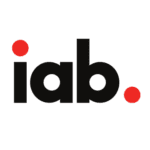What is Household Data?
Household customer acquisition data encompasses a few basic data points, including the number of persons living in a household, the number of generations in a household, and the relationships between the household’s members.
In today’s highly competitive business landscape, marketers are continually seeking innovative ways to understand their target audience and tailor their strategies accordingly. One often overlooked goldmine of information lies within households themselves. Gathering data on household composition, including the number of members and generations, can provide valuable insights that empower marketers to create more effective and personalized campaigns. In this post, we’ll explore how marketers can leverage household information to enhance their marketing efforts and drive greater success.
Why Use Household Customer Acquisition Data?
In the age of data-driven marketing, leveraging household acquisition data is an invaluable tool for marketers seeking to connect with their target audience on a deeper level. By understanding household dynamics, personalizing targeting, providing relevant product recommendations, identifying cross-selling opportunities, and implementing customer retention strategies, marketers can build stronger relationships with customers and drive business growth. As marketers embrace the power of household information, they position themselves to stay ahead of the competition and meet the ever-evolving needs of consumers in a highly competitive market.
Ready to collect household data? Give us a call for a free pixel trial.
Understanding Household Dynamics
A fundamental step in utilizing household information is gaining a deeper understanding of the dynamics within a household. By analyzing the number of members, their ages, and their roles, marketers can identify patterns and trends that shape consumer behavior. For instance, a household with multiple generations may have distinct preferences and purchasing habits. This knowledge allows marketers to develop tailored marketing messages that resonate with each household segment. A multi-generational household will indicate a need for anything from baby diapers to vitamins, while a household made up of two college-age roommates will need drastically different essentials every day and have very different interests.
Personalized Targeting
Household information provides marketers with the ability to deliver highly personalized marketing experiences. Armed with data about the number of members and their demographics, marketers can segment households based on shared characteristics. By tailoring messages and offers to specific segments, marketers can create campaigns that speak directly to the needs, interests, and aspirations of different household members. Personalized targeting helps build rapport and fosters a stronger connection between brands and their customers. For example, Dad may be looking for replacement blades for his razor, while Mom wants new running shoes, and their teenage daughter wants the latest recommendations for iPad accessories – everyone in the house wants something different, giving a smart marketer many paths to follow to reach a sale.
Product Recommendations
An in-depth understanding of household composition enables marketers to make more accurate and relevant product recommendations. By analyzing the number of family members and their ages, marketers can suggest products that cater to the specific needs of each household member. For example, a family with young children might benefit from targeted recommendations for children’s clothing, toys, or educational materials. Such personalized recommendations not only enhance customer satisfaction but also drive higher conversion rates and customer loyalty.
Contact us for a 30-day free trial – collect household data and see the difference!
Cross-Selling and Up-Selling Opportunities
Household information can also unveil cross-selling and up-selling opportunities. By knowing the number of members within a household, marketers can identify related products or services that may complement their customers’ existing purchases. For instance, a customer who recently bought a washing machine may be interested in detergent, fabric softeners, or extended warranty plans. By leveraging household information, marketers can strategically position these offers and increase the average order value.
Customer Retention Strategies
Marketers can leverage household information to create effective customer retention strategies. By understanding the makeup of a household, marketers can identify potential pain points and address them proactively. For example, if a household includes elderly members, marketers can send targeted communications highlighting products or services that cater to their specific needs, such as medical devices or home care services. By demonstrating care and understanding, marketers can foster long-term customer loyalty.




